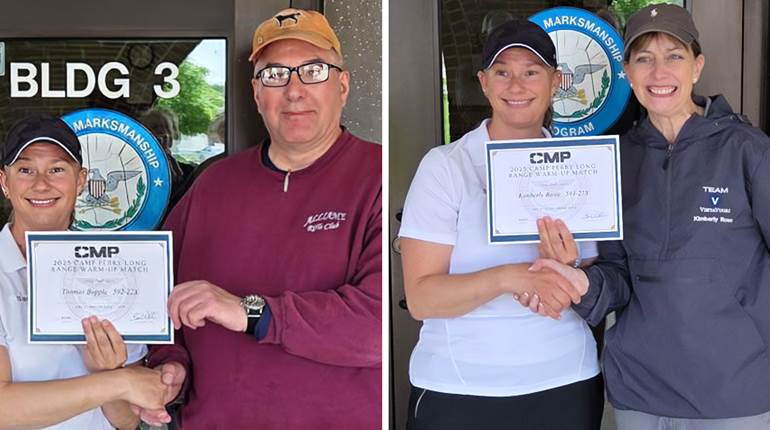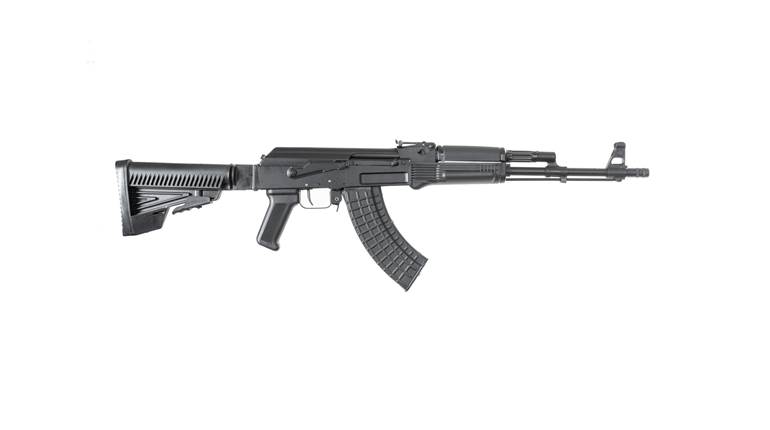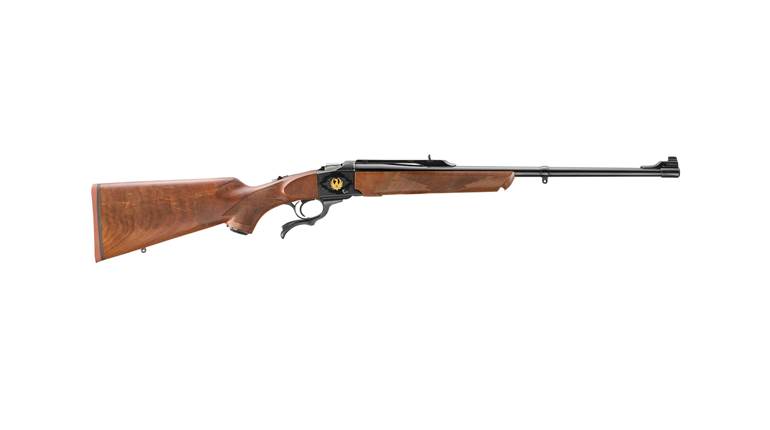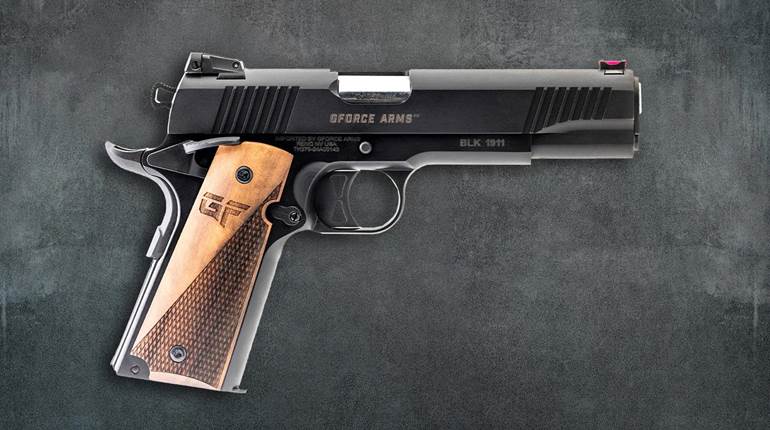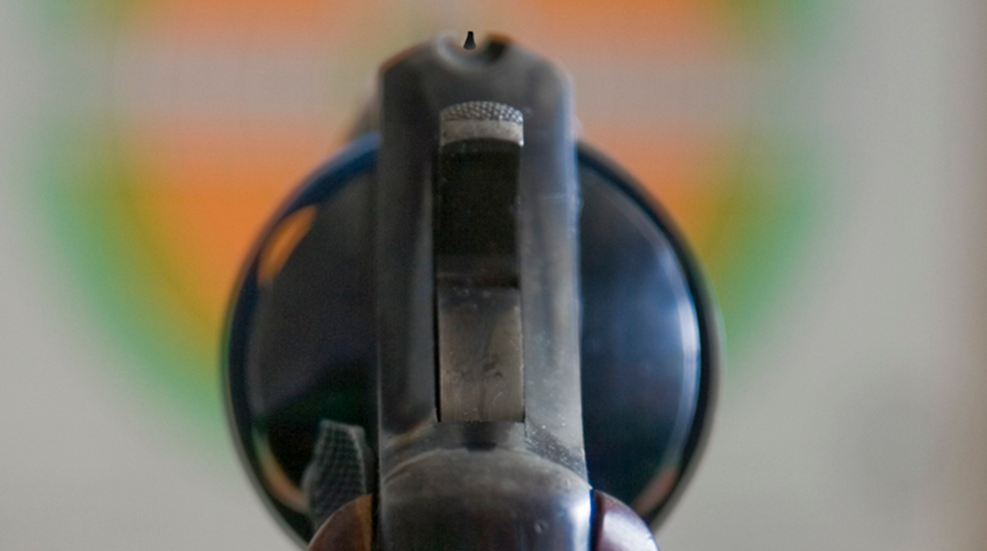
The first use of sights on a firearm appears to have been around the time of the muzzleloading musket. Earlier examples of firearms, notably fire lances and hand cannons, lacked the sophistication of repeatable loads and were pointed more like shotguns toward a potential target.
Once an iron barrel with a closed breech was developed, the notion of repeatable loads and accuracy gave way to adding a device to make it easier to aim the firearm. The first shoulder-mounted guns were muskets, characterized by an unrifled barrel. Logic would dictate that sighting along the barrel would increase the chance of a ball or load of projectiles hitting an intended target. A piece of iron attached near the muzzle and atop the barrel would provide a repeatable reference point with which to aim the gun. Even better, another piece of iron attached toward the rear of the barrel would provide a cross reference and help center the shot, side-to-side, what we now call windage. It didn’t take too long to figure out that once a ball or shot charge left the barrel, its velocity would immediately decay until the ball or charge hit the ground or target. Physicists describe a projectile’s path as roughly half of a parabola. By adjusting the height of the rear sight, that parabola can be distorted slightly and provide a repeatable position for determining where a ball or charge would land at a given distance. We now call that elevation. Elevation and windage cover the three planes of a bullet’s path, and sight systems are designed to allow predictable and repeated hits on a target over the effective distance that a firearm can deliver a projectile.
As projectile, fuel and ignition technology developed and became more sophisticated, so did the sighting systems that enabled shooters to be more accurate with their arm. By the time of the percussion-ignited musket, adjustable sights—usually with just the rear sight being adjustable—became common. Rifled arms—both rifle and pistol—featured sighting systems ranging from rudimentary to relatively sophisticated. Let’s take a closer look at these things we call sights and determine the best way to utilize them.
Fixed Sights
Fixed sights are sights without mechanisms to allow them to be regulated for a particular load. Typically, they are found on service handguns and shotguns. Most rifles have sights that can be adjusted; the exception being rifles intended to be used with optical sights only. The front sight may be a half-moon-shaped blade integral to the barrel, or it may be staked or dovetailed to the barrel just before the muzzle. A fixed rear sight is often a machined groove in the top strap of a revolver. Semi-automatic pistols often have a fixed rear sight dovetailed into the slide. Most shotguns intended as game guns do not have a rear sight; the shooter’s eye fulfills that function. Many percussion revolvers had a notch in the hammer’s nose that was to serve as the rear sight.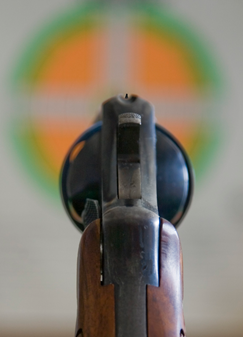
To use the fixed sight, the arm is pointed toward the target with the front sight either in the middle of the target or at the bottom, depending on how it is regulated. An equal distance between the inside edges of the rear sight centers the front sight for windage. The top of the front sight is level with the top of the groove or rear sight.
Fixed sights on a revolver can be regulated to a certain extent, but it takes a very careful hand to do so. Windage adjustments can be made by slightly removing a bit of metal from the rear sight groove with a needle file. Slow is the name of the game here because you cannot replace metal that you remove. Another method to adjust windage is to turn the barrel ever so slightly. The trick is to move the front sight the opposite direction you want the point of impact to be, i.e. if you want to move the center of your group to the right, move the front sight a little to the left. Elevation can be adjusted as well. Removing a few file strokes from the top of the front sight will raise the point of impact. Any place that you remove metal will need to be reblued.
Lowering the point of impact is much more difficult. You would need the services of a very careful gunsmith who could apply some weld to the top of the front sight; then slowly shape and file it to the correct profile. If you plan on attempting any of this, I should warn you to plan on using the load you regulate to for the life of the gun. Change bullet weight or powder charge, and the point of impact will be affected.
Adjustable Sights
The profile of adjustable sights seems endless. For handguns, there are Patridge sights, so named from its inventor, E. E. Patridge, a 19th-century American sportsman, consisting of a blade front with the rear face perpendicular to the barrel and a square-notch rear sight, adjustable for elevation and windage. Many of today’s handgun sights trace their lineage back to the Patridge. Often the front sight is a ramp with serrations or bead blasted to reduce glare but still gives a Patridge-like view to the shooter. These are found on handguns that spend a lot of time in a holster, the ramp allowing for a draw that does not shave a bit of leather onto the front sight. Most front sights like these are mounted on a ramp or rib attached to the barrel, thus raising them further above the bore line.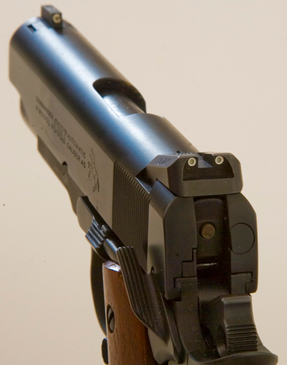
Another popular handgun sight includes three dots, one on each side of the rear sight and a third on the front sight. Often these are done with tritium, a slightly radioactive substance that allows the dots to glow in low-light conditions. They are not complex but relatively fast and accurate; simply align the three dots horizontally with the middle dot on the target and press the trigger. A downside is that eventually the tritium decays to the point that the three dots might as well be paint. There is a plethora of other sight configurations, some good and some not-so-good. The not-so-good ones tend to be overly complicated with painted lines thick and thin running all over the rear sight. Some use a V, others use a square notch, and still others use a U-shaped rear sight. Each has its promoters as well as their detractors.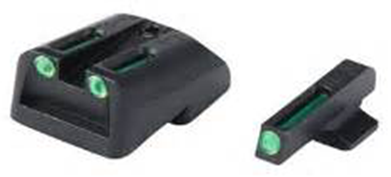
Another variation found not only on handguns but rifles as well is the fiber-optic sight. Basically a fiber-optic sight utilizes little spaghetti-like pieces of colored plastic. These plastic pieces are usually orange or day-glow green and take in ambient light to provide a visual contrast with the target. They are quite popular now because primarily they are less expensive than all-metal sights and are easily seen. For the occasional recreational shooter they may be OK, but for anyone who carries a gun daily and whose life may depend on it, fiber-optic sights strike me as unacceptably fragile.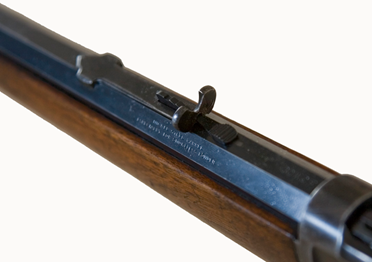
Optical sights—scopes, red dot and holograms—prevail on most modern rifles today, but even some of these carry a backup set of iron sights. Lever-action rifles traditionally have had either a blade or brass bead front sight either dovetailed into the barrel or atop a ramp, and a buckhorn-style rear sight adjustable for windage by drifting the sight within its dovetail, and for elevation a saw-tooth-shaped elevator. Bolt-action rifles used to have an open V rear sight and a bead front sight, occasionally including a hood that was supposed to reduce glare. Most hunters either threw the hood away or lost it in the field. The secret to getting any of these sights to work accurately was to make sure the front-sight bead is buried deep in the bottom of the rear sight. Trouble is, the rest of the rear sight often obscures the target so most people don’t get the front sight all the way down and often miss high. A variation of this kind of sight is the express sight, characterized by a wide, shallow V rear sight that is most often seen on dangerous game rifles. The wide V does not block as much of the target—handy when your target is pushing a ton and charging you.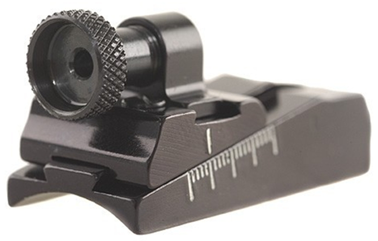
An excellent iron sight system for rifles is the peep sight. The front sight remains a brass or ivory post, but the rear is a round disc with a small hole in the center. It is claimed that the eye will automatically center the peep—which can be adjusted for elevation and windage—consistently. That’s partially true, but to really be consistent requires some practice. There is some “wiggle room” in most peep sights. A variation of the peep sight is the ghost ring—essentially a large peep sight. Ghost ring sights are very quick to use, especially on close-range targets and can be quite accurate. They are also popular on fighting shotguns.
There are plenty more sight systems, many a variation of what is presented here. However, these are the most popular iron sight systems used today. Iron sights are good for most any shooting outside of long-range precision shooting. As with anything else, the more you understand them, the better they will serve you.












